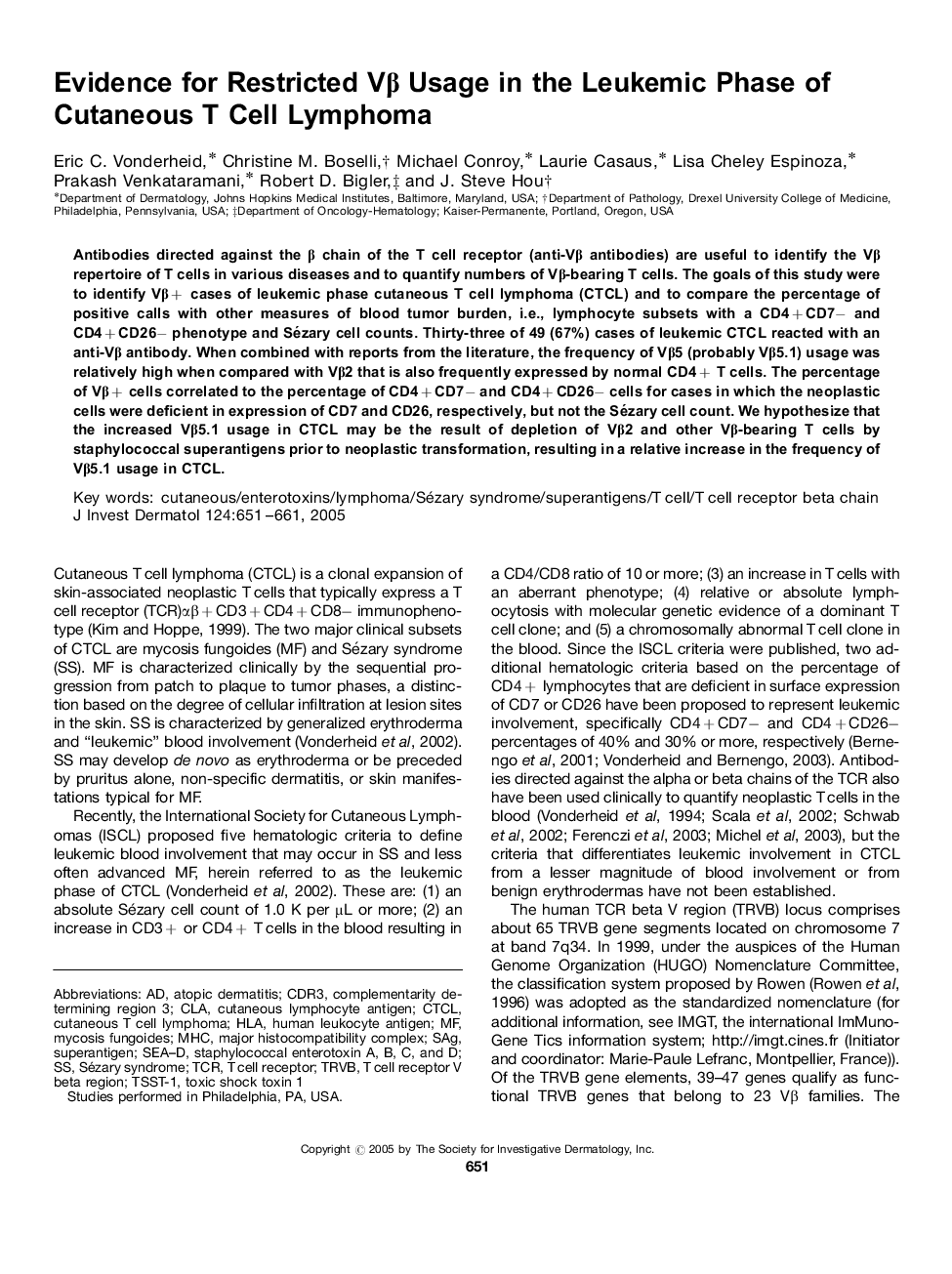| Article ID | Journal | Published Year | Pages | File Type |
|---|---|---|---|---|
| 9230323 | Journal of Investigative Dermatology | 2005 | 11 Pages |
Abstract
Antibodies directed against the β chain of the T cell receptor (anti-Vβ antibodies) are useful to identify the Vβ repertoire of T cells in various diseases and to quantify numbers of Vβ-bearing T cells. The goals of this study were to identify Vβ+ cases of leukemic phase cutaneous T cell lymphoma (CTCL) and to compare the percentage of positive calls with other measures of blood tumor burden, i.e., lymphocyte subsets with a CD4+CD7- and CD4+CD26- phenotype and Sézary cell counts. Thirty-three of 49 (67%) cases of leukemic CTCL reacted with an anti-Vβ antibody. When combined with reports from the literature, the frequency of Vβ5 (probably Vβ5.1) usage was relatively high when compared with Vβ2 that is also frequently expressed by normal CD4+ T cells. The percentage of Vβ+ cells correlated to the percentage of CD4+CD7- and CD4+CD26- cells for cases in which the neoplastic cells were deficient in expression of CD7 and CD26, respectively, but not the Sézary cell count. We hypothesize that the increased Vβ5.1 usage in CTCL may be the result of depletion of Vβ2 and other Vβ-bearing T cells by staphylococcal superantigens prior to neoplastic transformation, resulting in a relative increase in the frequency of Vβ5.1 usage in CTCL.
Related Topics
Health Sciences
Medicine and Dentistry
Dermatology
Authors
Eric C. Vonderheid, Christine M. Boselli, Michael Conroy, Laurie Casaus, Lisa Cheley Espinoza, Prakash Venkataramani, Robert D. Bigler, J. Steve Hou,
